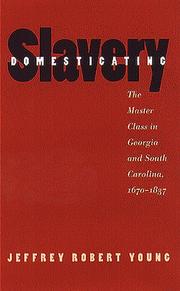| Listing 1 - 10 of 41 | << page >> |
Sort by
|
Book
ISBN: 9781845420192 1845420195 Year: 2009 Publisher: Cheltenham: Elgar,
Abstract | Keywords | Export | Availability | Bookmark
 Loading...
Loading...Choose an application
- Reference Manager
- EndNote
- RefWorks (Direct export to RefWorks)
Economic schools --- Smith, Adam --- Economics --- Philosophy --- Smith, Adam, --- Philosophy. --- AA / International- internationaal --- 330.44 --- 330.08 --- 08 --- -330.153 --- Economic theory --- Political economy --- Social sciences --- Economic man --- Adam Smith. --- Economisten. --- Biografieën en memoires. --- Smit, Adam, --- Yadang Simi, --- Ya-tang Ssu-mi, --- 亚当・斯密, --- Simi, Yadang, --- Ssu-mi, Ya-tang, --- 斯密亚当, --- סמית, אדם, --- スミスアダムス, --- 330.153 --- Biografieën en memoires --- Economisten --- Adam Smith --- Economics - Philosophy --- Smith, Adam, - 1723-1790 --- Smith, Adam (1723-1790) --- Economie politique --- Critique et interprétation --- 18e siècle --- Critique et interprétation --- 18e siècle

ISBN: 1858982677 Year: 1997 Publisher: Cheltenham Elgar
Abstract | Keywords | Export | Availability | Bookmark
 Loading...
Loading...Choose an application
- Reference Manager
- EndNote
- RefWorks (Direct export to RefWorks)
Book
ISBN: 3030346072 3030346064 Year: 2020 Publisher: Cham : Springer International Publishing : Imprint: Springer,
Abstract | Keywords | Export | Availability | Bookmark
 Loading...
Loading...Choose an application
- Reference Manager
- EndNote
- RefWorks (Direct export to RefWorks)
This book is a quick guide to the key components of trauma center administration, management, and patient care. This book provides essential information for hospitals working toward trauma center designation, and for established trauma centers who want to improve their performance. This book provides trauma center personnel with a comprehensive overview of trauma center administrative structure, basic clinical operations, performance improvement and site visit preparation and examines the most common critical injuries seen by trauma centers to demonstrate how a properly functioning center addresses multiple priorities in critically ill patients. This book provides critical information for hospitals looking toward becoming a trauma center and established trauma centers that wants to improve their performance.
Emergency medicine. --- Traumatology. --- Emergency Medicine. --- Traumatic Surgery. --- Emergency Services. --- Trauma centers --- Administration. --- Shock trauma centers --- Trauma care systems --- Trauma units --- Hospitals --- Emergency services --- Accident medicine --- Trauma medicine --- Emergency medicine --- Surgery --- Wounds and injuries --- Medicine, Emergency --- Medicine --- Critical care medicine --- Disaster medicine --- Medical emergencies

ISBN: 0807876186 9780807876183 0807824909 9780807824900 0807847763 9780807847763 9798890871251 Year: 1999 Publisher: Chapel Hill : University of North Carolina Press,
Abstract | Keywords | Export | Availability | Bookmark
 Loading...
Loading...Choose an application
- Reference Manager
- EndNote
- RefWorks (Direct export to RefWorks)
In this carefully crafted work, Jeffrey Young illuminates southern slaveholders' strange and tragic path toward a defiantly sectional mentality. Drawing on a wealth of archival evidence and integrating political, religious, economic, and literary sources, he chronicles the growth of a slaveowning culture that cast the southern planter in the role of benevolent Christian steward--even as slaveholders were brutally exploiting their slaves for maximum fiscal gain. Domesticating Slavery offers a surprising answer to the long-standing question about slaveholders' relationship with the proliferating capitalistic markets of early-nineteenth-century America. Whereas previous scholars have depicted southern planters either as efficient businessmen who embraced market economics or as paternalists whose ideals placed them at odds with the industrializing capitalist society in the North, Young instead demonstrates how capitalism and paternalism acted together in unexpected ways to shape slaveholders' identity as a ruling elite. Beginning with slaveowners' responses to British imperialism in the colonial period and ending with the sectional crises of the 1830s, he traces the rise of a self-consciously southern master class in the Deep South and the attendant growth of political tensions that would eventually shatter the union.
Slaveholders --- Slavery --- Plantation life --- Regions & Countries - Americas --- History & Archaeology --- United States - General --- Country life --- Abolition of slavery --- Antislavery --- Enslavement --- Mui tsai --- Ownership of slaves --- Servitude --- Slave keeping --- Slave system --- Slaveholding --- Thralldom --- Crimes against humanity --- Serfdom --- Slaves --- Slave holders --- Slave masters --- Slave owners --- Slavemasters --- Slaveowners --- Persons --- Plantation owners --- Attitudes --- History. --- Justification. --- History --- Justification --- Georgia --- South Carolina --- Politics and government --- Enslaved persons --- Enslavers --- African Americans --- Social Science
Book
ISBN: 1612334415 9781612334417 9781612334158 Year: 2015 Publisher: Boca Raton, Florida : Dissertation. com,
Abstract | Keywords | Export | Availability | Bookmark
 Loading...
Loading...Choose an application
- Reference Manager
- EndNote
- RefWorks (Direct export to RefWorks)
Prostitution. --- Female prostitution --- Hustling (Prostitution) --- Prostitution, Female --- Sex trade (Prostitution) --- Sex work (Prostitution) --- Street prostitution --- Trade, Sex (Prostitution) --- White slave traffic --- White slavery --- Work, Sex (Prostitution) --- Sex-oriented businesses --- Brothels --- Pimps --- Procuresses --- Red-light districts --- Sex crimes --- Sex work
Book
ISBN: 3030710483 3030710475 Year: 2021 Publisher: Cham, Switzerland : Springer,
Abstract | Keywords | Export | Availability | Bookmark
 Loading...
Loading...Choose an application
- Reference Manager
- EndNote
- RefWorks (Direct export to RefWorks)
Trauma centers --- Administration. --- Evaluation. --- Shock trauma centers --- Trauma care systems --- Trauma units --- Hospitals --- Emergency services --- Traumatologia --- Centres mèdics --- Administració sanitària --- Administració dels serveis de salut --- Administració dels serveis sanitaris --- Gestió farmacèutica --- Gestió hospitalària --- Administració dels serveis d'infermeria --- Planificació sanitària --- Cirurgia --- Medicina d'urgència --- Cirurgia ortopèdica --- Ferides i lesions --- Anestèsia en traumatologia --- Traumatologia.
Book
Abstract | Keywords | Export | Availability | Bookmark
 Loading...
Loading...Choose an application
- Reference Manager
- EndNote
- RefWorks (Direct export to RefWorks)
Digital
ISBN: 9783030710484 9783030710491 9783030710477 Year: 2021 Publisher: Cham Springer International Publishing
Abstract | Keywords | Export | Availability | Bookmark
 Loading...
Loading...Choose an application
- Reference Manager
- EndNote
- RefWorks (Direct export to RefWorks)
Managing a trauma center involves complex clinical care, long nights and days, administrative work, self-examination, critical review of patient care and significant regulatory requirements. Performance improvement is the key element of trauma center effectiveness. No trauma center provides flawless care, thus all centers have opportunities to improve. A competent performance improvement program is critical to trauma center outcomes. This book provides key information on all aspects of trauma PI program management. In some ways, PI is an art more than a science, so the more interaction program leaders have with strong PI programs, the more they can learn about how to improve their processes. The book outlines the generally accepted processes for identification of opportunities for improvement, which are the key component of performance improvement. This includes: rounding with care teams, contemporaneous chart review, audit filters, and voluntary submissions to the trauma program for review. This book explains how to triage opportunities for improvement, analyze them, form corrective actions, and finally achieve loop closure. The book covers the roles of the personnel in the PI program, what is required to dissect the opportunity to determine action plans, how to document the entire process, and how to keep track of opportunities for improvement to ensure that your program is progressively improving care. The final sections of the book deal with specific opportunities for improvement, action plans, and loop closure through the use of case studies. The book serves as a follow-up to Dr. Jeffrey Young's recently published book Trauma Centers, which serves as a quick guide to the key components of trauma center administration, management, and patient care. .
Book
ISBN: 0891582878 Year: 1978 Publisher: Boulder Westview
Abstract | Keywords | Export | Availability | Bookmark
Book
Year: 1978 Publisher: Boulder Westview Press
Abstract | Keywords | Export | Availability | Bookmark
 Loading...
Loading...Choose an application
- Reference Manager
- EndNote
- RefWorks (Direct export to RefWorks)
| Listing 1 - 10 of 41 | << page >> |
Sort by
|

 Search
Search Feedback
Feedback About UniCat
About UniCat  Help
Help News
News